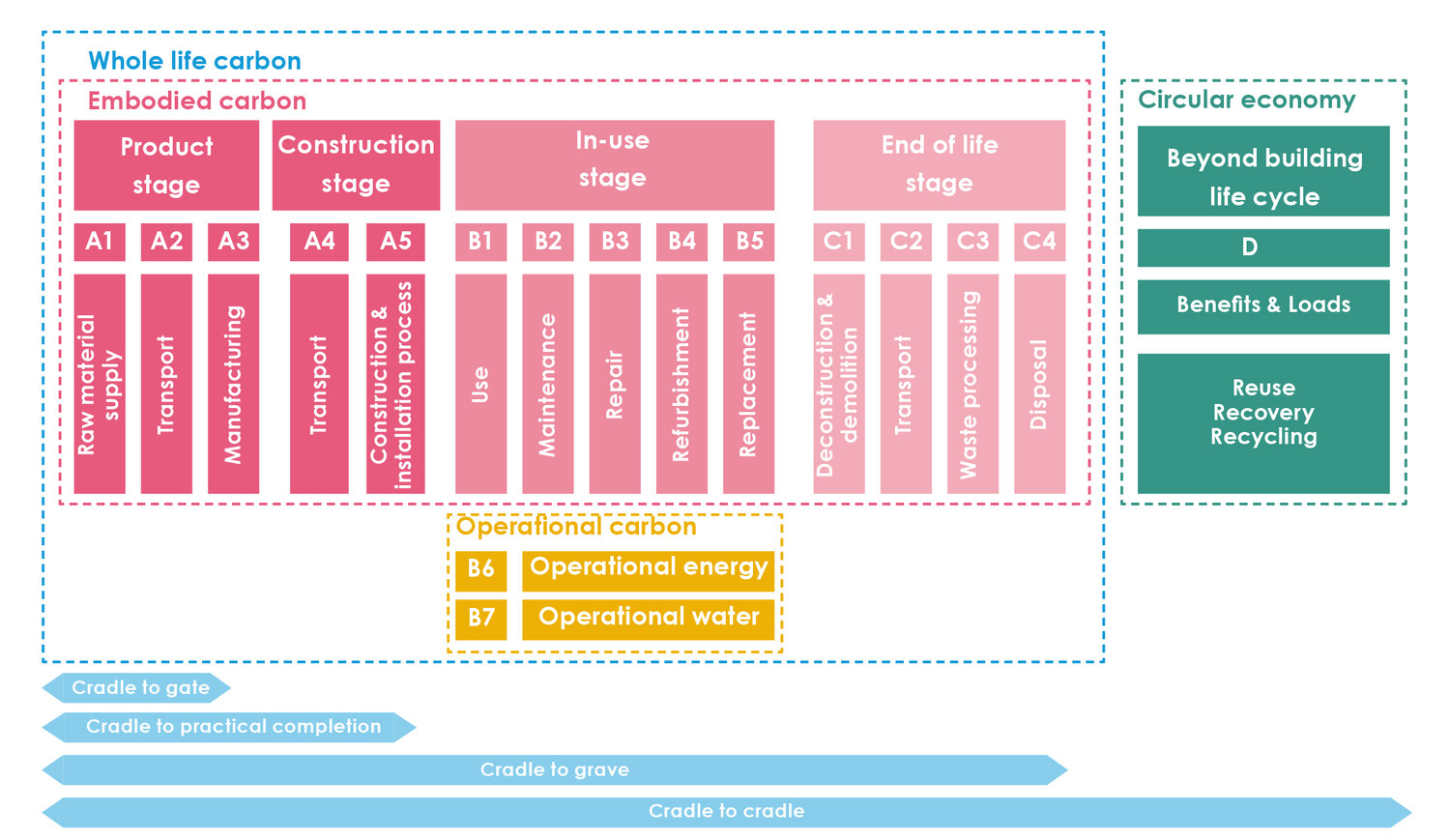Insights
Embodied carbon in lighting products.
Lighting the path forward.
Our lighting design team recently joined the authoring team for TM65.2 Embodied carbon in building services: lighting.
A step forward in embodied carbon for lighting.

TM65 was created to allow for quick assessment of embodied carbon (Kg/Co2e) for M&E products. The guidance provides a quick framework for the assessment of products which is like the EPD (Environmental Product Declaration) or Life Cycle Assessment (LCA). The EPD provides whole life carbon data in Kg/Co2e throughout the carbon lifecycle stages as seen in the diagram below.

TM65.2 is based on the established TM65 methodology but with new materials and information specific to lighting products. The reason this is an exciting development for lighting products is that EPDs, though often third party verified and more accurate, are extremely expensive and as such few manufacturers have done them. The information they supply is accurate but as a species, we do not have the time to wait for full EPDs to become more accessible to all scales of manufacturers.
At this stage in our understanding of embodied carbon in lighting products, we need data, lots of it, and the more manufacturers that can provide this data on their products the better.
When it comes to embodied carbon in lighting products, we need to understand what “good” is. We need to understand what “average” is. And we need manufacturers to start competing to some extent to make “good” even better. We need to speed up the assessment process as the planet cannot wait for EPDs to become widely adopted.
An industry growing up.
The lighting industry’s impact on the production of greenhouse gases is vast, but for those who specify lighting equipment the decisions you make can feel disconnected from environmental impacts. Often this is because the embodied greenhouse gases and carbon of the product you specify is not available. If it were, you could at least make an informed opinion about the environmental impact of the equipment you specify. You could compare one product against another, and you could use the information to see a total embodied carbon impact for the lights you specify. This may feel like a small step but if you can see a total project carbon value you can make more conscious efforts to reduce how much you specify or use a product that is more efficient or has fewer virgin materials. It makes it more tangible and connects specifiers with the implications of their decisions.
Participating in big conversations.
Lighting designers, electrical engineers and other specifiers of light want to make informed decisions about the stuff they specify will benefit from the guidance. The more people use it, the more data we have and the more informed the specifiers decisions will be.
TM65.2 can change the role of the lighting specifier from a powerless observer to an active participant in the mission to reduce lighting’s environmental impact and help save our planet.
Explainer: CO2e or CO2 equivalent is a created value that takes all greenhouse gases and relates them all back to carbon dioxide equivalents so at least we can define greenhouse gas impacts with a single metric.